Airports embracing an influx of passengers with new social distancing technology
The new tech is in use just as traffic begins picking up at airports.
Get all the latest news on coronavirus and more delivered daily to your inbox. Sign up here.
People are making their way back to airports as travel starts to pick back up. And if you find yourself in the TSA line, you may be getting some extra help staying six feet away from others.
“We're adding technology that can add value to ensure the safety, the health and the well-being of the traveling public,” said Maurice Jenkins, the information systems director at Miami International Airport.
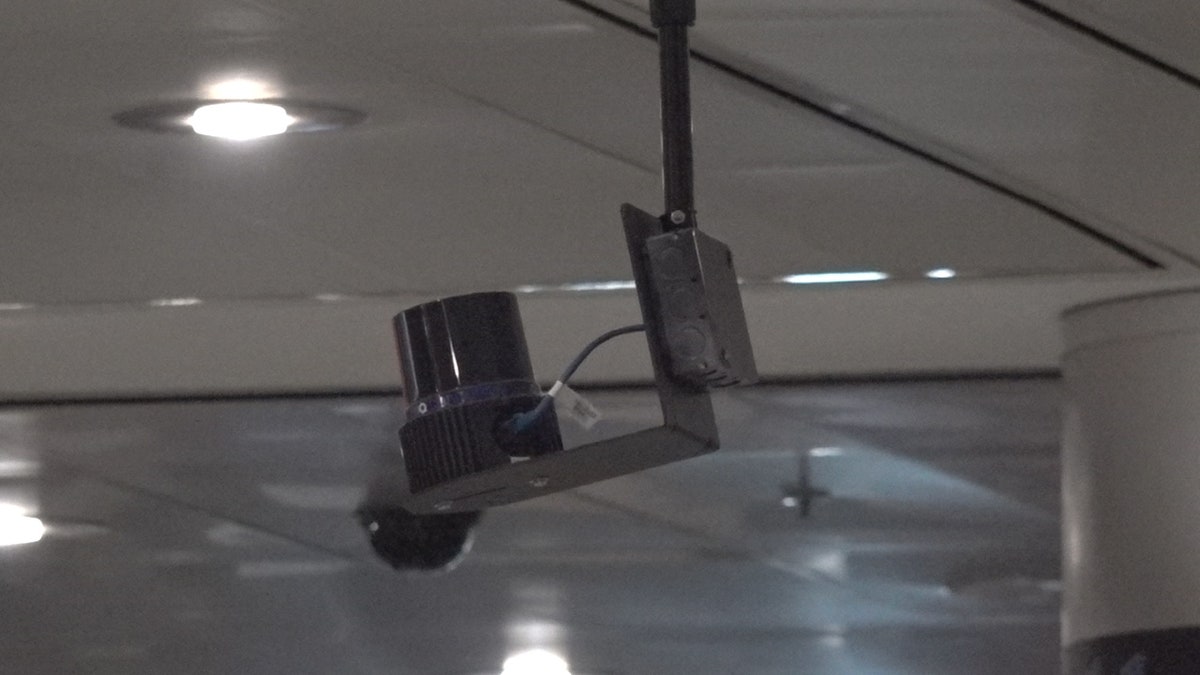
Miami is one of the first seven airports in the country to roll out motion analytics technology called “Safe Distance.” The system will help airports practice safe social distancing and gather data from movements in line. (Elina Shirazi)
Miami is one of the first seven airports in the country to roll out motion analytics technology called “Safe Distance.” The system will help airports practice safe social distancing and gather data from movements while in line.
FLYING DURING A PANDEMIC: STAYING SAFE AS TRAVEL BEGINS TO RESUME
Fiona Strens is the co-founder of a company called CrowdVision, which created the video-based people-tracking software.
“Imagine every person in there is a moving dot. You can get a really good kind of image from above of where everyone is, how they cluster, how they're moving, how far apart they are from each other, and so on,” Strens said.
The new tech is in use just as traffic begins picking up at the Miami International Airport. The air hub has seen about 10,000 average daily visitors in the month of May, according to airport officials, nearly doubling the 5,000 daily visitors who arrived in the month of April.
Unseen to these travelers, however, are the motion cameras in the ceiling, which can measure the distance between person A and person B standing in line at security checkpoints, and also, how long they’ve been standing next to each other.
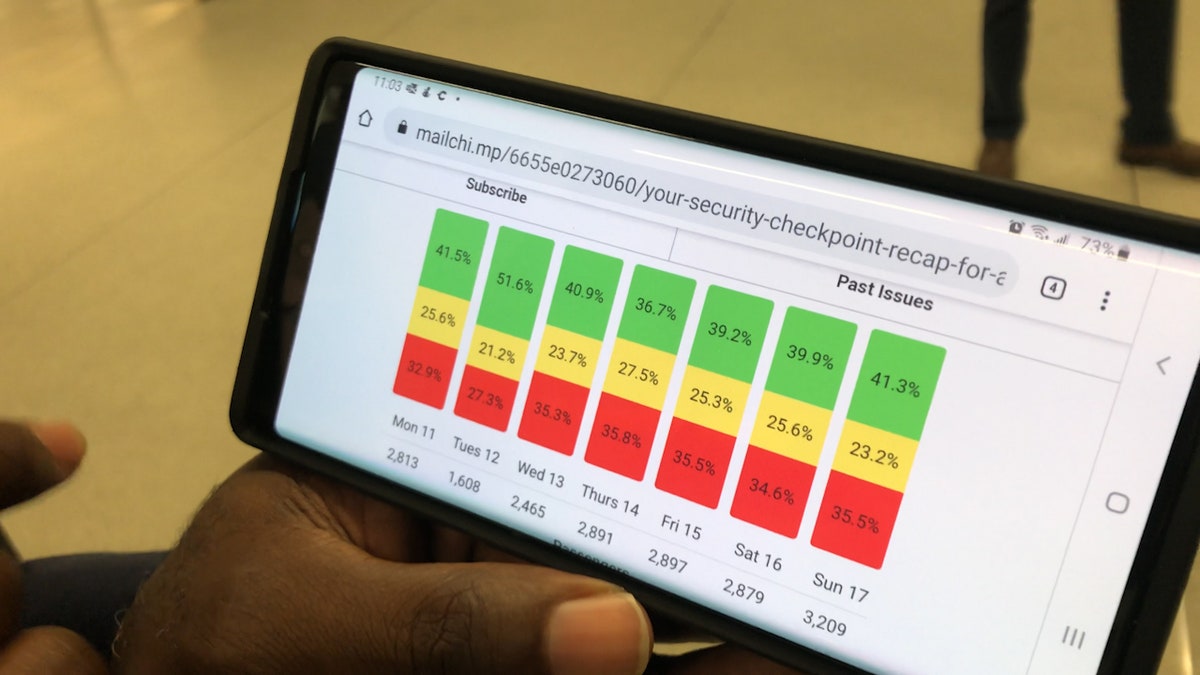
Maurice Jenkins, Miami International Airport's information systems director, says the data can be used to generate a “score” that gives the airport information to make necessary changes. (Elina Shirazi)
Jenkins, MIA's information systems director, said they use the data to generate a “score” that gives them information to make necessary changes, like controlling the amount of people in line, increasing signage and audio announcements, or moving people to a different line altogether.
“You can see the numbers of passengers," Jenkins said. "Looking at the score… you will see green, red and yellow. Green [are the] people that were maintaining a social distance of six feet or more,” he explained, pointing out the data on his cellphone dashboard.
“Within that data that we get, we generate a score [for] the traveling public. Are they maintaining social distancing? If they are not, what is it that we need to do to enhance that there? Do we need to increase our signage? Do we need to do more audio announcements? We're able to examine that and then we're able to patrol that,” Jenkins said.
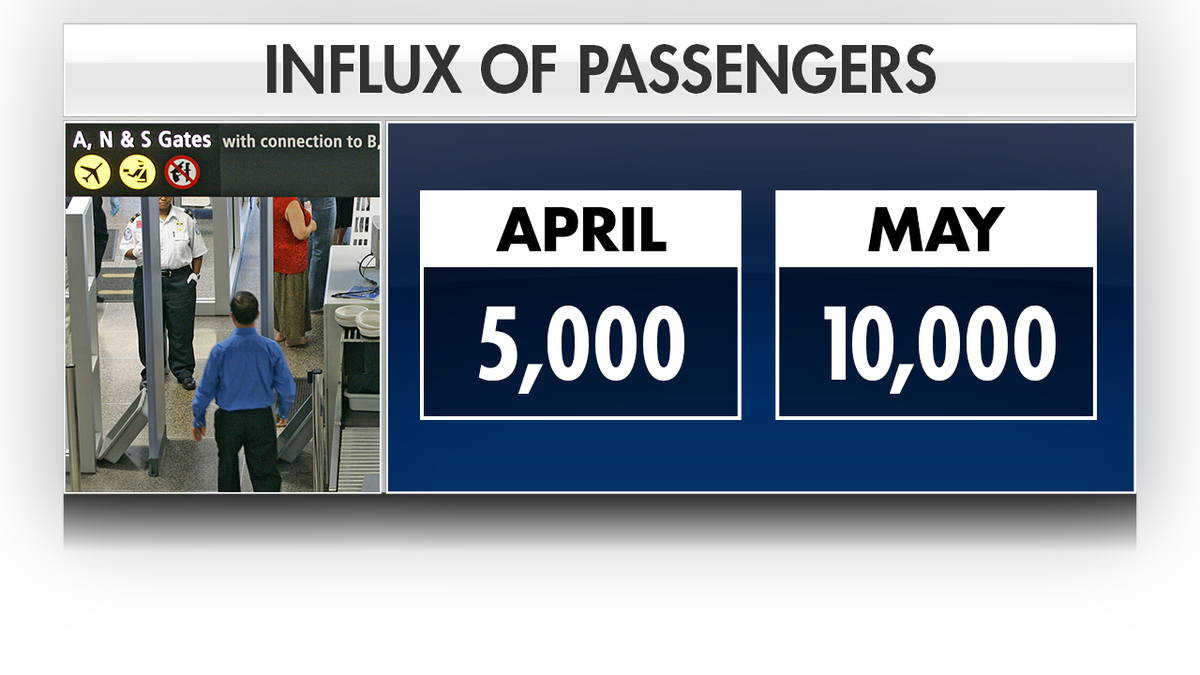
The new tech is being put to use just as traffic begins picking back up at the Miami airport. The airport has seen about 10,000 average daily visitors in the month of May — nearly double the 5,000 daily visitors who arrived in the month of April. (Elina Shirazi)
CLICK HERE TO SIGN UP FOR OUR LIFESTYLE NEWSLETTER
Jenkins said they are considering giving passengers access to the data in the future, either on TSA dashboards or on their cellphones. Strens, however, said that choice will likely be up to the airports or airlines themselves.
“So whichever airport the technology's deployed in, it's pretty much not visible to the passenger unless the airport chooses to make some of the data visible. So, for example, you'll quite often see wait times [on] screens in airports driven by our technology. This technology has really been used to measure wait times and things like that, but now obviously the focus has shifted towards trying to help airports keep their environment safe,” Strens said.
In any case, Strens believes this data might one day be featured on passengers' airlines' apps.
“The problem with airports is, you never quite know how many people are going to turn up at any point in time. So the more data you've got, the better," added Strens. "Making sure you've got the right number of lanes open and the right number of staff on at any point in time to meet the passenger demand. So actually, the win here is to keep people moving and keep them safe."
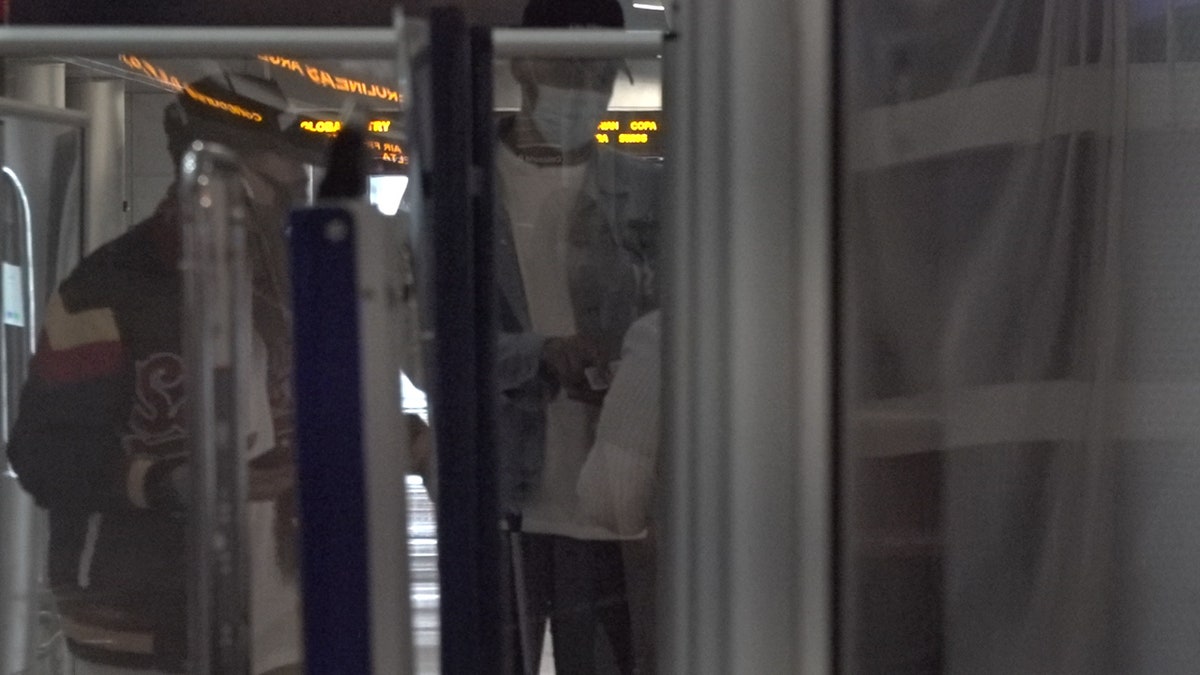
Some travelers said the new regulations gave them greater peace of mind during their time inside the airport. (Elina Shirazi)
Some travelers said the new regulations gave them greater peace of mind.
“I've been, you know, flying since the whole thing started. So, I mean, I was a little concerned in the beginning. But I mean, I think I'm more comfortable with it now ... I've definitely noticed a lot of changes and everything,” said Jason Lekatos, a traveler at the airport
Jenkins, too, applauded the changes. “There are more checks and balances in place. People say having longer lines at the checkpoints may be a little bit more intrusive. However, I'm ensuring that my safety is … being able to go from my home to board that aircraft. I'm having a safe experience."
CLICK HERE TO GET THE FOX NEWS APP
Looking ahead, developers say the Safe Distance technology could also work in other crowded spaces like casinos, train stations and shopping malls.
Eventually, Customs and Border Protection (CBP) also plans to move their technology to full touchless travel. The agency's goal is to use full facial comparison technology at all checkpoints, and use mobile passport kiosks. They are also encouraging travelers to apply for global entry.
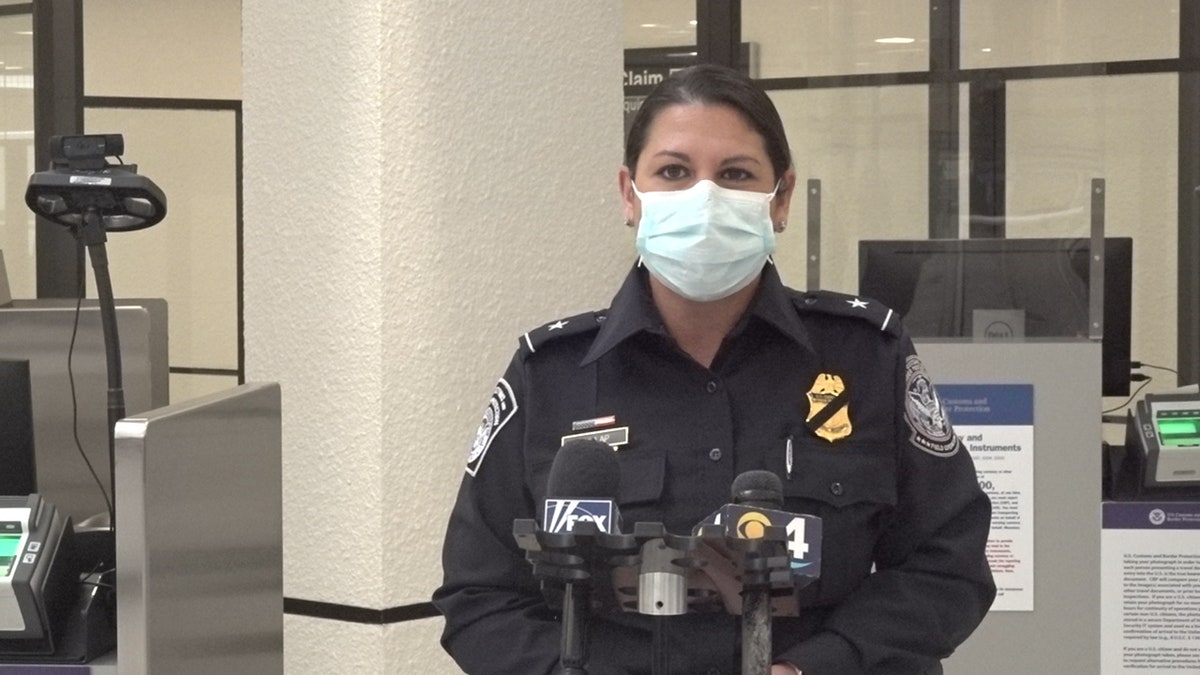
Eventually, Customs and Border Protection also plans to move their technology to full touchless travel. The agency's goal is to use full facial comparison technology at all checkpoints, and use mobile passport kiosks. They are also encouraging travelers to apply for global entry. (Elina Shirazi)
“We are looking for a process, from [the] curb all the way to boarding an aircraft, in order to not have to use a travel document. We will be able to use that facial comparison technology from the moment they arrive to the moment they board the aircraft,” said Sara Dunlap, CBP assistant port director at Miami International Airport.
CLICK HERE FOR FOX NEWS' CONTINUING CORONAVIRUS COVERAGE
Jenkins said he is looking forward to getting more of the airport on board with new technology to keep passengers safe during this difficult time.
“Knowing… that we have the ability now to take a piece of technology, and actually being able to apply it relatively quickly as we continue to evaluate more technologies down the line. I think it's a great thing,” Jenkins said.





















